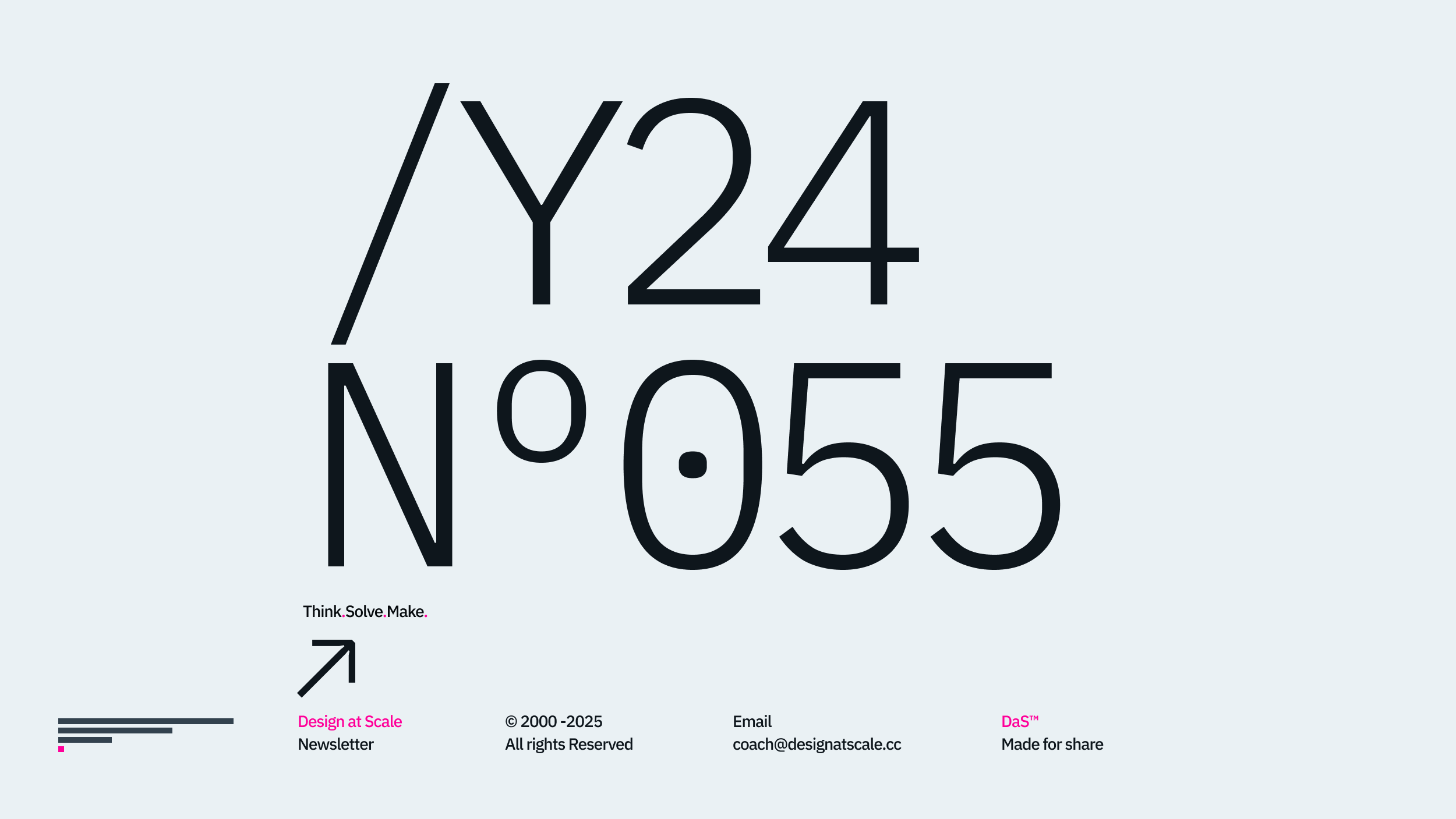Welcome to the third article of this series that focuses on designers in the team of one. After defining our Ambition and our Design Beliefs, we land on the first pillar that will be broadcasted daily through the designers' attitude, motivation and delivered work – yes, it’s a Design Philosophy.
Philosophy
In ancient Greece, philosophy is described as the love of wisdom. A systematic study of general and fundamental questions concerning topics like existence, reason, knowledge, value, mind, and language. It is a rational and critical inquiry that reflects on its own methods and assumptions.

Design
A design is a concept of either an object, a process, or a system that is specific and, in most cases, detailed. Design refers to something that is or has been intentionally created by a thinking agent, though it is sometimes used to refer to the nature of something. The verb to design expresses the process of developing a design. In some cases, the direct construction of an object without an explicit prior plan may also be considered to be a design (such as in some artwork and craftwork).

What is Design Philosophy
In conclusion of the above, we explore the reasoning of knowledge and language in value creation through process methods resulting in building a product or service.
Design Philosophy is different to Design thinking. Design thinking allows us to explore different avenues to specific products or services. Design philosophy helps us to debate the points and their feasibility. Opening the avenues to not just test the proposition but to come up with a better proposition altogether.
Among many others, let’s mention a few design philosophies and how they can be recognised:
- Form follows function: This philosophy states that the design of an object should be determined by its function. In other words, the way something looks should be dictated by how it works.
- Less is more: This philosophy advocates for simplicity and clarity in design. It suggests that by removing unnecessary elements, designers can create more effective and engaging experiences.
- Universal design: This philosophy aims to create products and environments that are accessible to everyone, regardless of their age, ability, or background.
- Sustainable design: This philosophy seeks to create products and environments that have a minimal impact on the environment.
- Emotional design: This philosophy focuses on creating products and environments that evoke positive emotions in users.

What is your Design Philosophy?
As with beliefs and vision, philosophy is an internal and very subjective piece of your mental ability to explore, analyse, and influence the existence of a product or service. Philosophy on the other hand, has a tangible implication in the form of agreements. Whether with yourself as a designer or as a team.
A designer's philosophy can be influenced by a variety of factors, including their personal beliefs, their training, and the context in which they work. It is important for designers to have a clear understanding of their own philosophy so that they can make informed decisions about their work.
Inform designers of their own design philosophy to make better decisions about the design process, positively affecting the Product delivery timeline.
Communicating their ideas effectively to clients and stakeholders at the articulation becomes based on understanding a broader landscape and not just Design jargon.
Designers with their own design philosophy become more effective and engaging with the rest of the team as their internal world has already formed.
This is reflected in their consistent message and ambition to well describe the hierarchy/system that is represented in their work. This inevitably influences the fact that they stand out from the competition.

How do you build your Design Philosophy?
If you are a designer, take some time to think about your own design philosophy.
What are your beliefs and values about design?
What are the goals that you want to achieve through your work?
What impact do you make through your design decisions?
Once you have figured out the understanding of your own design philosophy, you can use it to guide your thinking, actions, and impact of your work. That allow you to broadcast a design message that is united and truly meaningful.

Design Philosophy in Practice.
As a designer in a team of one – you are probably not just a designer but an accountant, business consultant, illustrator, typographer, writer and, at last, some kind of coder that brings all your designs together in some shape or form.
Even though no one sees the other roles, the design comes across as the strongest.
To distil the right message takes time and practice. Many great portfolios present numerous case studies without soul. Others focus on the set of strong visuals without clarifying what has been the purpose of the delivery.
On our Twitter Account, you’ll find those that combine both the story and the practical deliverables that create the desired impact.

Happy scaling through design!
Hey, I’m Jiri Mocicka.
London-based Design Director, Trusted Advisor and Author of Design at Scale™. The method that empowers individuals to shape the future organisation through design.
If you have a question, join our Community and reach out to like-minded individuals who scale design propositions. An online Academy can help you to find your feed in teams of 01, 10, and 100, supported by Grid Magazine and Supply section, where we weekly bring more insights on how to become a design leader in your organisation.











